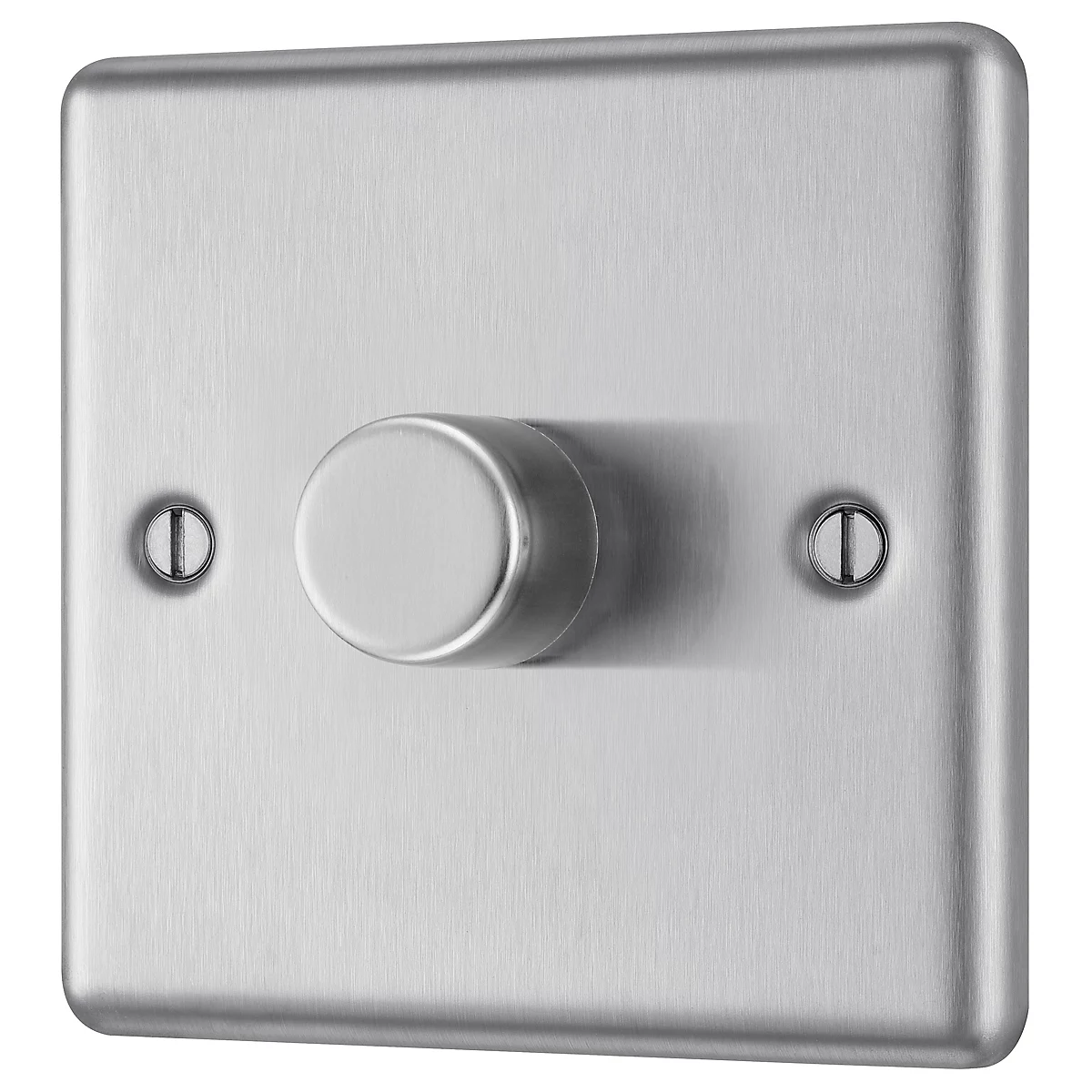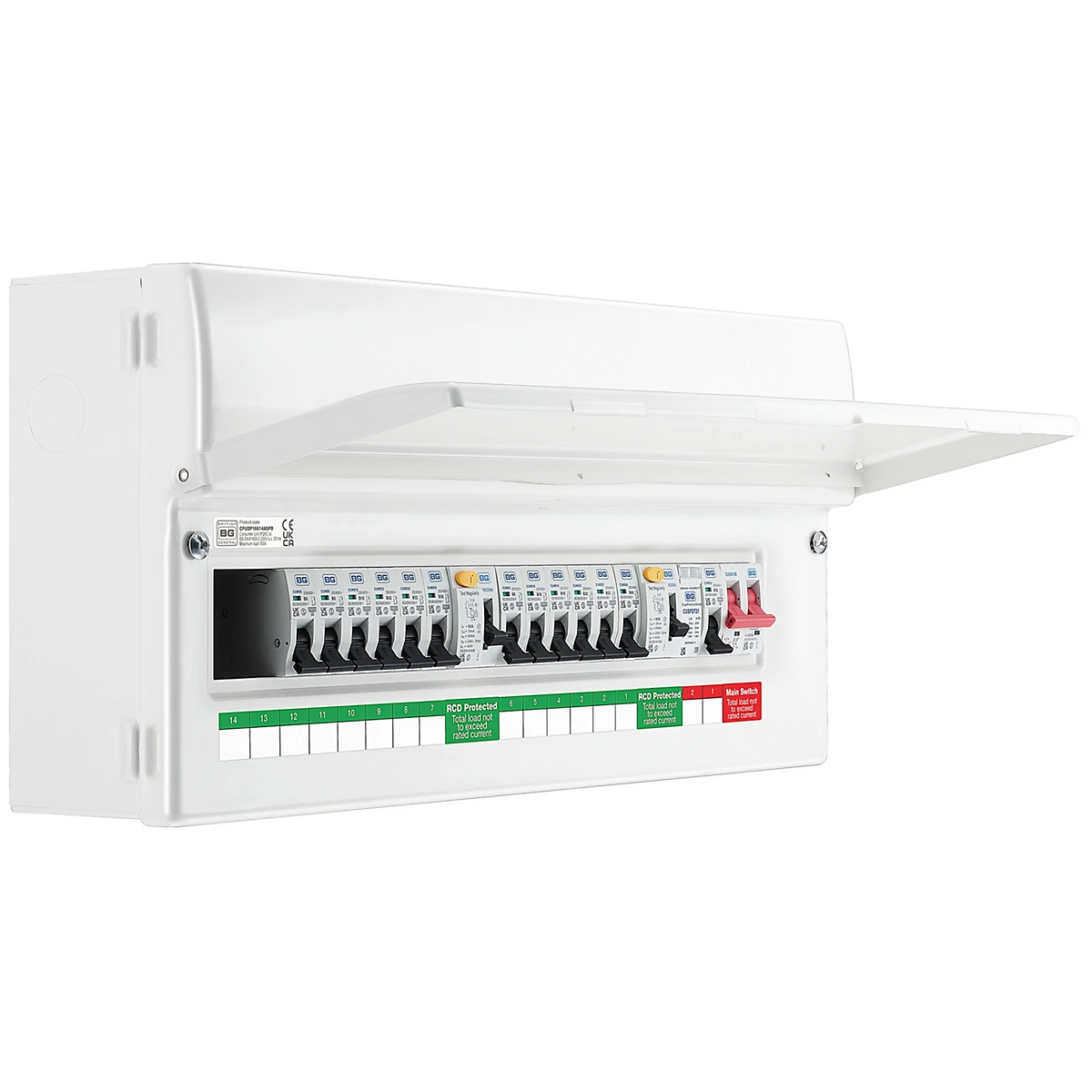Do you have flickering lights in the house? Pros reveal common causes and how to deal with them
Flickering lights in the house are a sign that you could have serious electrical issues that need sorting. Find out if it’s time to call in a professional

If you have flickering lights in the house, then you have a problem. It could be something as simple as a failing bulb, or it could be something far more serious that needs immediate attention from an electrician.
Identifying the cause of the flickering lights will help you decide what to do next. If it's a new bulb you can sort yourself, but if you have a problem with your wiring, it might be time to think about rewiring your home.
Here, we reveal eight of the most common causes to help you decide if you can fix the issue yourself or call in an electrician.

Clive Holland is the former host of Cowboy Trap on the BBC. Now a broadcaster on Fix Radio, the UK’s only national radio station for builders and tradespeople, Holland is one of the UK’s leading property and DIY experts.
1. Problem with light bulb
If you have just one isolated light flickering in the house, there could be a problem with your bulb. Most likely the bulb itself is either faulty or not screwed or clipped in properly, so make sure you check this first.
Swap out the existing bulb for a new lightbulb of the same type, ensuring that it is fitted correctly, and test whether this solves the issue. Do remember to turn off the light beforehand.
It is also important to note that some newer bulbs behave differently to their older counterparts.
Clive Holland, Fix Radio’s spokesperson and host of “The Clive Holland Show”, explains: "Years ago, the choice was GLS (General Lighting Service) which commonly looked pear- or candle-shaped and had a filament within. Occasionally, they would flicker just before they went pop.
Bring your dream home to life with expert advice, how to guides and design inspiration. Sign up for our newsletter and get two free tickets to a Homebuilding & Renovating Show near you.
"The 21st century, however, saw the advent of domestic LED lamps. Lightweight, with low running costs, and above all boasting up to 30,000 hours' life span – a real revolution in lighting.
"If any new lamp you buy today is flickering, it's usually faulty."
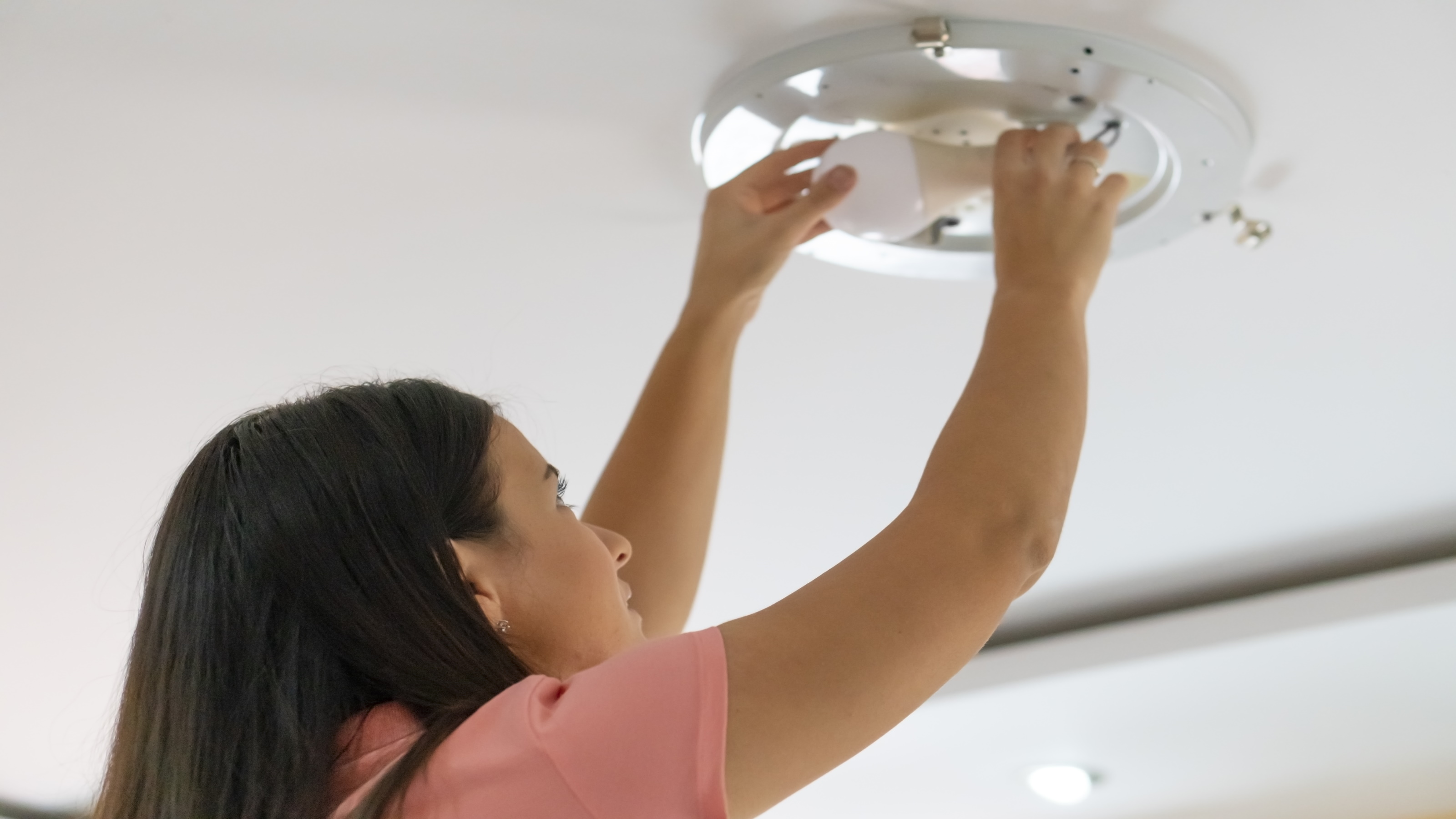
Try these to help stop flickering lights
2. Mismatched bulb and fitting
Different lightbulbs are designed to work with different fittings. Mismatches are as common now as they were decades ago, and even the best smart bulbs can be fitted wrongly.
Fix Radio’s Clive Holland explains: "In the '80s, the introduction of compact fluorescent lamps to replace the old GLS lamps was heralded as energy-saving. That was true, a 15W version replaced the old 100W old style and was said to give out the same lux (light) level.
"Problem was, to begin with, they were much bigger and heavier, and people struggled to fit them into existing fittings."
The good news is that mismatched bulbs and fittings can be easily sorted out. Simply check your fixture and replace the incompatible bulb with one that matches its specific switch. This should stop flickering lights in the house becoming a persistent problem.
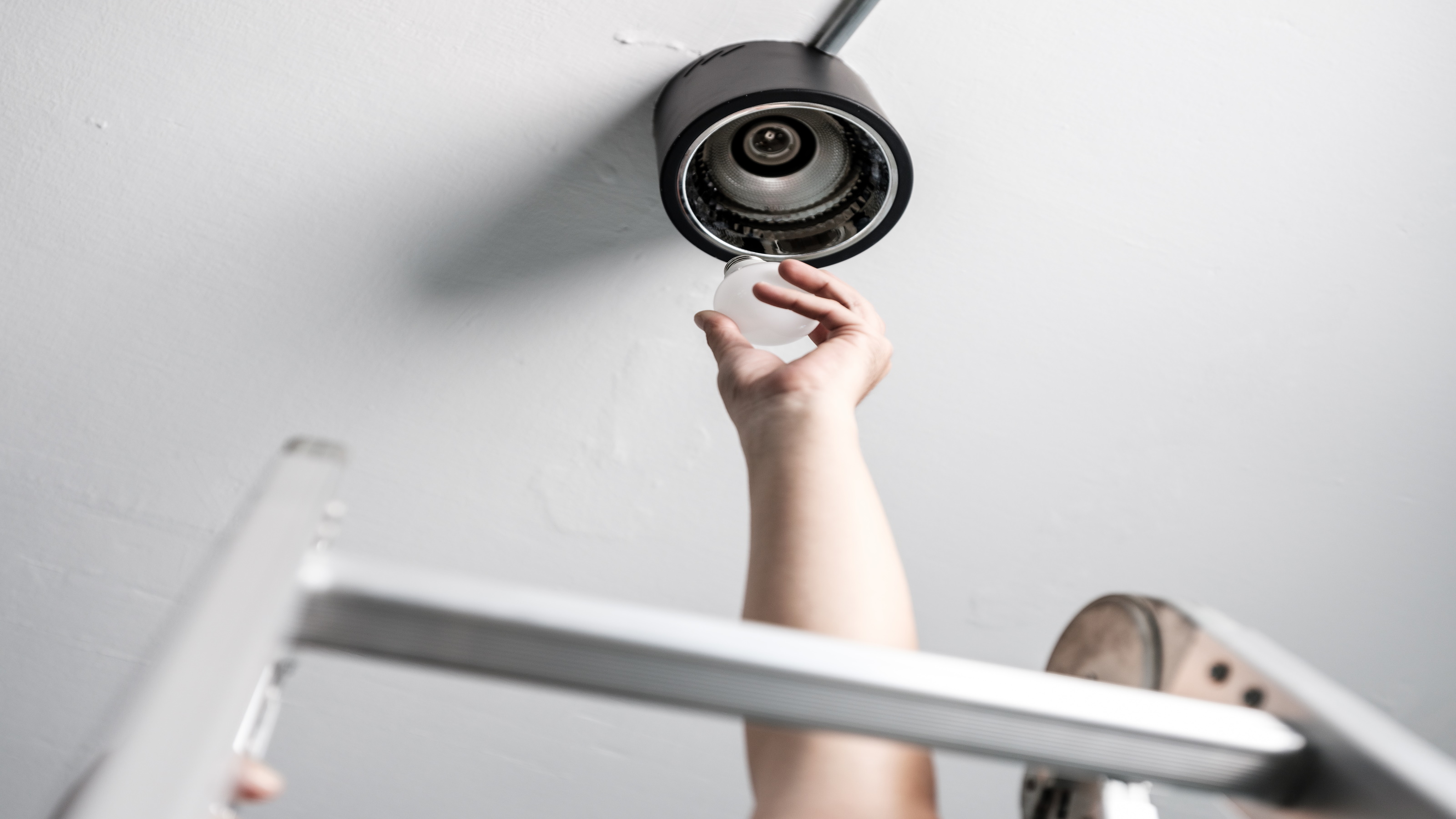
3. Faulty wiring
A home with any faulty wires is more likely to have flickering lights than not. If your wiring is loose or outdated, this can lead to a phenomenon known as arcing, where the electrical current 'jumps' between gaps in the connection, creating a potential fire hazard.
Faulty wiring in the home is unsafe and should be dealt with as a matter of urgency. Be sure to contact a qualified electrician if you think flickering lights in the house are wire-related.
Tell-tale signs that you have faulty wiring are burning smells, buzzing sockets, and outlets that are hot to the touch. If you notice any of these, call an electrician as soon as possible.
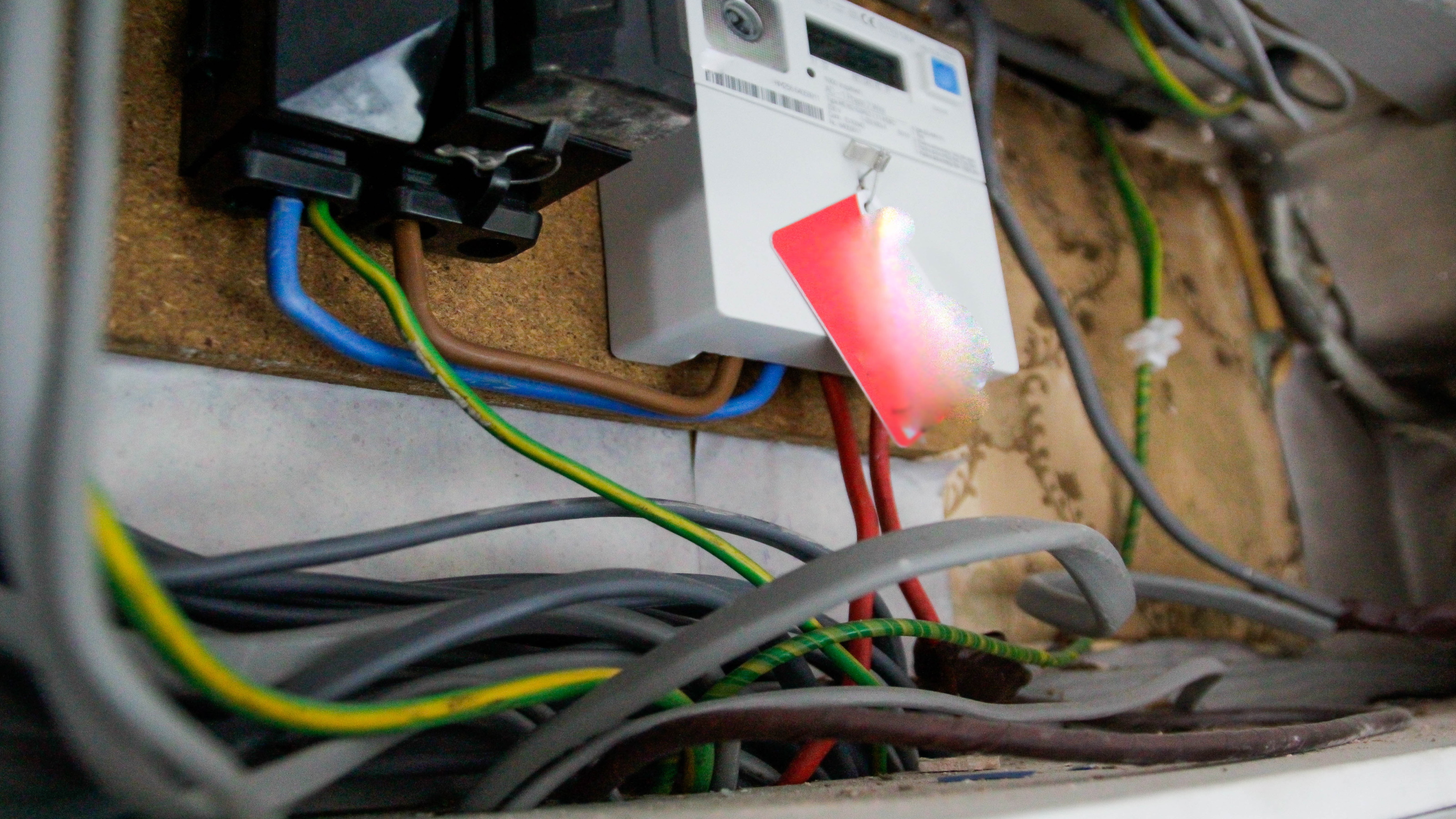
4. Light switch and dimmer issues
Another potential cause of flickering lights in the house is the switches and/or dimmers. This is especially the case if and when they're paired with the wrong lightbulb type.
Fluorescent or LED bulbs are sometimes interchanged with non-compatible dimmers, resulting in a persistent flicker. What's more, conventional dimmer switches tend to only accommodate incandescent or halogen bulbs, so make sure yours correspond accordingly to avoid any blinking or flickering. Using the correct lightbulb type with the best light switches and dimmers should result in an immediate improvement.
Lighting expert Sam Garbutt, from LED & Power, says, “Typically, the most common light switch malfunctions include flickering lights, overheating, delayed responses and buzzing sounds.” He adds, “The majority of these issues can be straightforward to identify, but others may require more insight. For instance, an overheating switch can be identified by being warm to the touch and having a burnt smell”

Sam Garbutt is a director at LED & Power and has worked in the lighting industry since 2016, Sam has a wide range of knowledge regarding the installation and maintenance of light fixtures to create a safe and aesthetically pleasing interior and exterior.
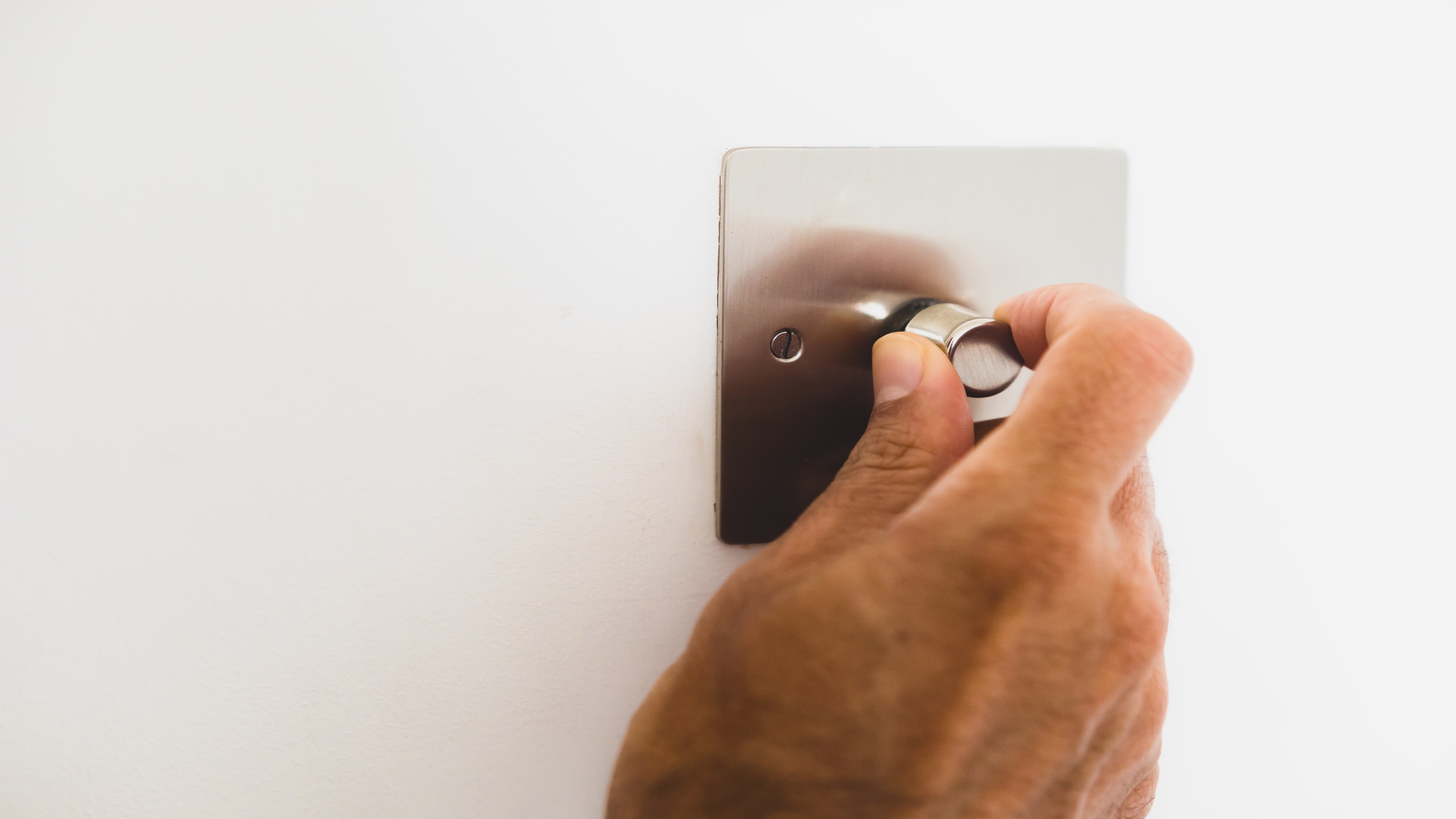
5. Fluctuating voltage
Reduced or fluctuating voltage has a direct bearing on electrics and, by extension, flickering lights in the house.
The UK National Grid delivers power to homes at around 230 volts per dwelling. As a rule, your household electrical appliances should operate efficiently anywhere between 115 and 125 volts, ensuring a consistently generous flow of electricity throughout the property.
However, if the voltage goes higher or lower than expected, appliances can malfunction, and flickering lights are usually the first sign of this happening.
You can measure the voltage in your home with an analogue or digital voltmeter, which helps give a clearer picture of whether electricity levels are too high or too low.

6. Loose connection
It is usually possible to find electrical sockets in ample supply throughout your home. Of course, this means that a loose connection between the plug and socket-outlet can lead to standalone lights, e.g., table lamps, flickering around the house.
"Faulty wall sockets usually show tell-tale signs on the outside. Blackening around the pin entry points, arching and possibly sparking switches, cracks or chips," explains Clive Holland. "In all cases, stop using the socket and get it replaced by a qualified electrician."
Swaping a socket if the existing one appears too damaged is usually a straightforward, inexpensive task.
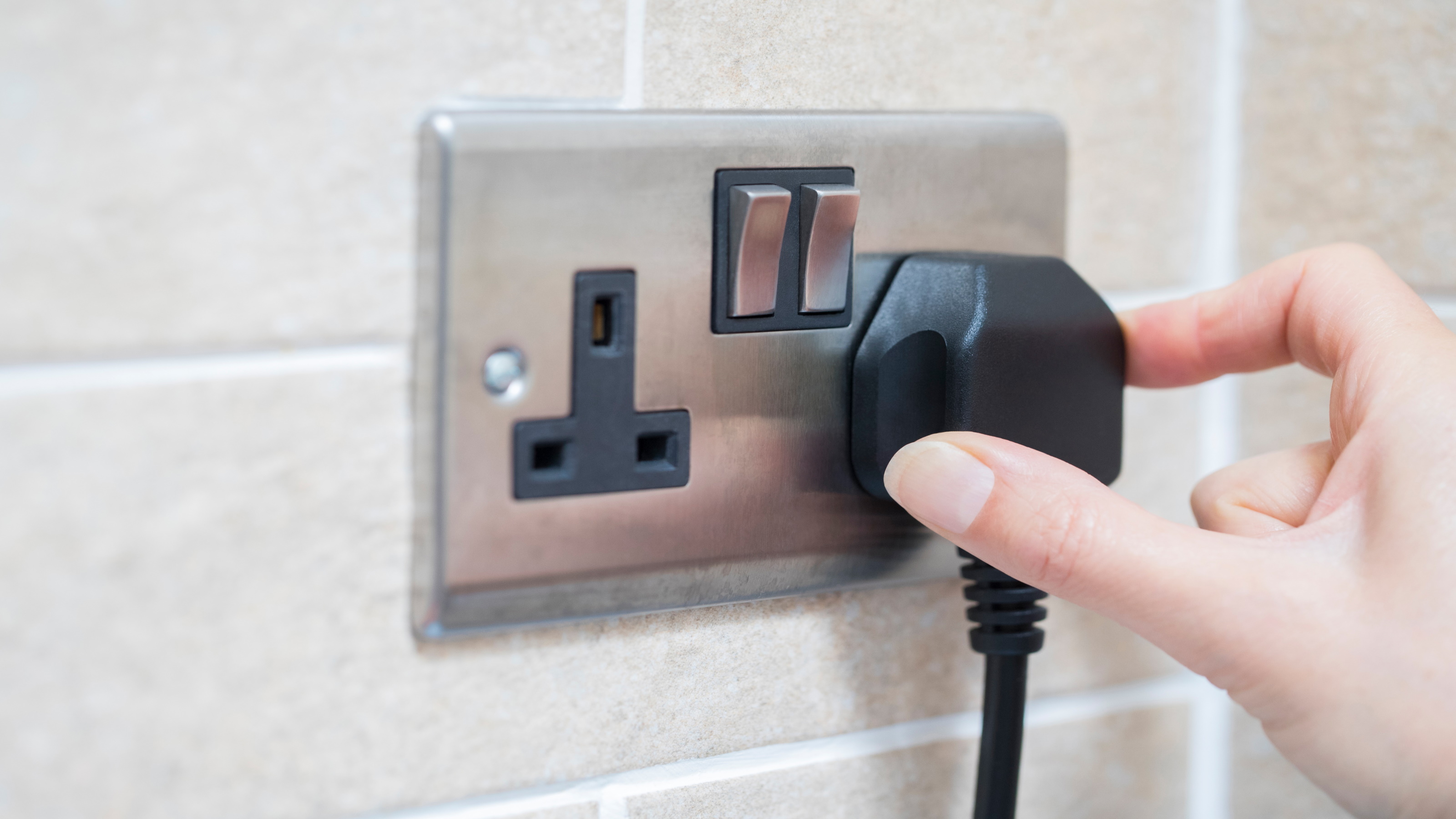
7. Overloaded circuit board
As the number of household appliances and devices we have in our homes increases, overloaded circuit boards are becoming more and more common. This is chiefly due to the amounts of electricity needed to power each appliance.
For example, if flickering lights are infrequent and brief, this is usually not serious. Still, you should keep an eye on the situation, in case anything changes.
However, any blinks or flickers lasting longer than a few seconds each time should be reported to a qualified electrician, as this could mean that the circuit board needs replacing.
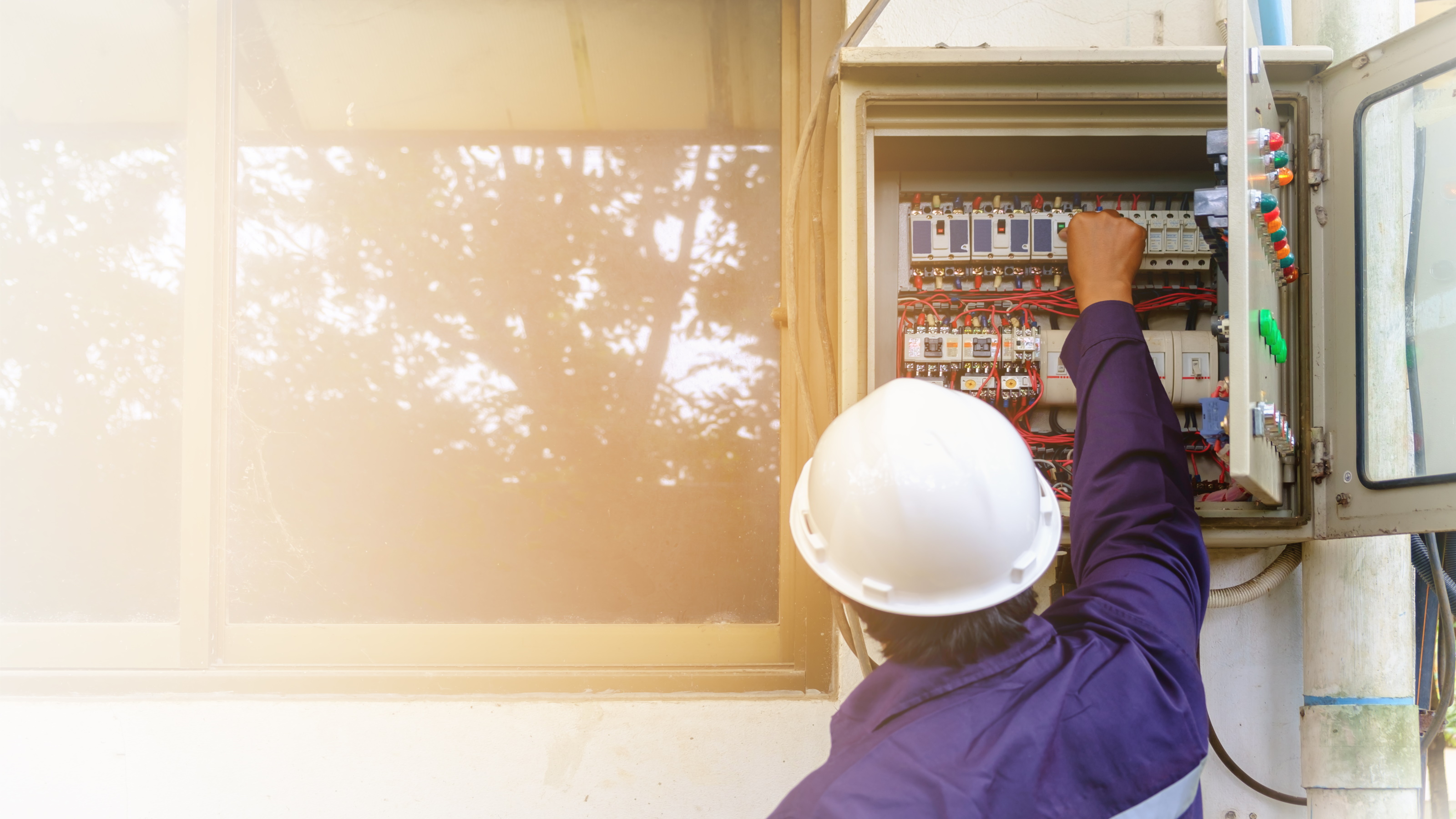
8. Electric utility service issues
From time to time, flickering lights in the house can be attributed to a problem with your energy provider. This is most likely to occur ahead of a major electrical disturbance, e.g., an area-wide power outage or storm.
Check in with your neighbours first, as they could be experiencing similar problems; in which case, you know it's probably not a fault with your household electrics.
As an added precaution, you can also call 105, a free service available to people in England, Scotland and Wales, for useful information about possible local power cuts.
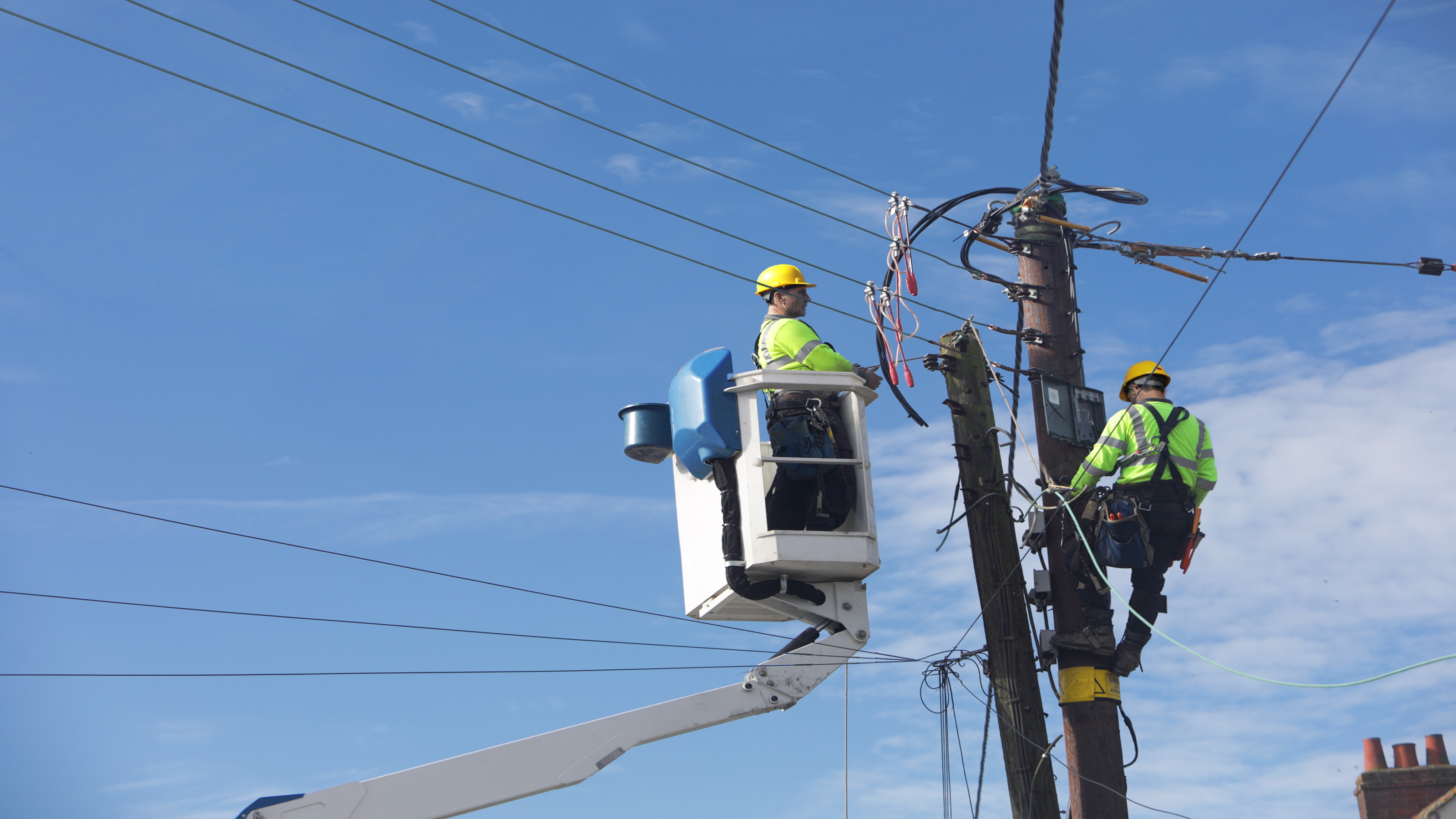
FAQs
Are flickering lights a fire hazard?
Not all causes of flickering lights in the house are dangerous. They may be a simple fix you can undertake yourself (such as swapping bulbs) or a straightforward job for an electrician.
However, something like faulty wiring can pose a serious threat to home safety because of how the electrical current travels; it could potentially overheat its surrounding environment. Early intervention is your best bet here, especially if you're renovating a house or embarking on a similarly major project.
A point reinforced by Garbutt, “It’s important not to dismiss or ignore flickering lights as they can be a major fire hazard. Flickering lights commonly signal underlying electrical issues such as faulty wiring, overloaded circuits, damaged outlets or voltage fluctuations. When these issues are left untreated, they can result in electrical fires or electric shocks, so it’s important to consult an electrician as soon as possible”.
How much does it cost to fix flickering lights in the house?
The cost to fix flickering lights in the house depends on two things: the root cause of the flickering and the repairs required to address it.
Changing a lightbulb, for example, means you only have to pay for the product; any labour is entirely your own. Expect to pay no more than a few pounds as standard for any new pack of LED bulbs. (The best LED bulbs are usually a little more.)
Now, if we think about fixing faulty wiring, that's potentially a very expensive project. In the UK, rewiring a whole house can cost £3,000-£10,000.
Fixing any isolated faulty wiring, however, will cost less, but you must still budget upwards of £150, as fees can vary depending on where the fault lies in the house, and the labour rates of the electrician to get things working as they should once again.
When you’re sorting out the flickering lights in your home, it's a good time to think about a new lighting setup. Check out our lighting design guide, along with our small bedroom lighting ideas and landing lighting ideas for inspiration.
Rob Keal is the Content Editor at Homebuilding & Renovating. With a background in content marketing, he began his career back in 2016 as a freelancer, before honing his craft at various digital marketing agencies. Looking to specialise in DIY and homes, he joined the team in February 2022.
Renovation has been part of his life since he was nine years old, when his parents bought a medieval cottage and completely revived it, introducing him to kitchen remodels, loft conversions, landscape gardening, and much more besides along the way. A bedroom extension and patio refurbishment are among his next planned projects. He is also passionate about interior design and landscape gardening.

